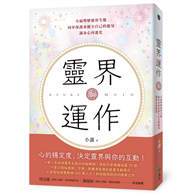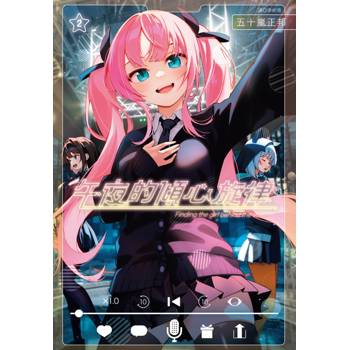The human condition affects us all。 As we journey through life, we face birth, aging, sickness, and death, each bringing significant challenges。 How can we better understand our human condition? What can we learn from it?
In Buddhist Encounters: Finding a Home in the Human Condition, Dr。 Lewis R。 Lancaster explores the essence of our existence, addressing the internal conflicts and external pressures exacerbated by the post-pandemic and AI era。 Through the lens of Buddhist teachings, he seeks answers to these timeless issues, reflecting on the very dilemma that concerned the Buddha himself。
| FindBook |
有 4 項符合
Buddhist Encounters:Finding a Home in the Human Condition的圖書 |
 |
Buddhist Encounters:Finding a Home in the Human Condition 作者:Lewis R. Lancaster 出版社:佛光 出版日期:2024-08-01 語言:英文 規格:普通級 |
| 圖書館借閱 |
| 國家圖書館 | 全國圖書書目資訊網 | 國立公共資訊圖書館 | 電子書服務平台 | MetaCat 跨館整合查詢 |
| 臺北市立圖書館 | 新北市立圖書館 | 基隆市公共圖書館 | 桃園市立圖書館 | 新竹縣公共圖書館 |
| 苗栗縣立圖書館 | 臺中市立圖書館 | 彰化縣公共圖書館 | 南投縣文化局 | 雲林縣公共圖書館 |
| 嘉義縣圖書館 | 臺南市立圖書館 | 高雄市立圖書館 | 屏東縣公共圖書館 | 宜蘭縣公共圖書館 |
| 花蓮縣文化局 | 臺東縣文化處 |
|
|
圖書介紹 - 資料來源:博客來 評分:
圖書名稱:Buddhist Encounters:Finding a Home in the Human Condition
內容簡介
作者介紹
作者簡介
Lewis R. Lancaster
● Emeritus Professor, Department of East Asian Languages, University of California, Berkeley, USA
● Emeritus Professor, Department of Religious Studies, University of the West (UWest)
● Member of the Board of Directors, Nan Tien Institute, Australia
● Founder and Former Director, the Electronic Cultural Atlas Initiative (ECAI)
● President of UWest, 2004–2006
A pioneer in the digitization of Buddhist texts, which has become an essential practice in contemporary Buddhist scholarship. Over his illustrious six-decade career, he has published over 75 research articles and reviews, and authored or edited numerous books on Buddhism, including Prajnaparamita and Related Systems, The Korean Buddhist Canon, Buddhist Scriptures, Early Ch’an in China and Tibet, and Assimilation of Buddhism in Korea. His significant contributions include the creation of a descriptive catalog and digitization of the Korean Buddhist Canon, for which he received the Jogye Order’s Grand Award in 2014.
Lewis R. Lancaster
● Emeritus Professor, Department of East Asian Languages, University of California, Berkeley, USA
● Emeritus Professor, Department of Religious Studies, University of the West (UWest)
● Member of the Board of Directors, Nan Tien Institute, Australia
● Founder and Former Director, the Electronic Cultural Atlas Initiative (ECAI)
● President of UWest, 2004–2006
A pioneer in the digitization of Buddhist texts, which has become an essential practice in contemporary Buddhist scholarship. Over his illustrious six-decade career, he has published over 75 research articles and reviews, and authored or edited numerous books on Buddhism, including Prajnaparamita and Related Systems, The Korean Buddhist Canon, Buddhist Scriptures, Early Ch’an in China and Tibet, and Assimilation of Buddhism in Korea. His significant contributions include the creation of a descriptive catalog and digitization of the Korean Buddhist Canon, for which he received the Jogye Order’s Grand Award in 2014.
目錄
Contents
Acknowledgments
Foreword
Preface
Introduction
Part 1 Understanding the Human Condition
1. Human Condition: Earthly and Cosmic
2. Human Condition
Part 2 Learning from the Four Great Messengers
3. The Persistent Message of Illness
4. The Future of Old Age
5. Death: The Last Moment of a Human
6. Learning to Respond to the Human Condition
Part 3 Living with Reality
7. Cause
8. Emptiness: Not Nothing
9. Behavior: Acts of Consequence
10. Personal Self
Part 4 Confronting Challenges
11. Desire
12. Racism
13. Buddhism in the Time of COVID
Part 5 Journeying Toward Enlightenment
14. Enlightenment: A Distant Beacon
15. Reincarnation
16. Detachment
17. Compassion
Conclusion
Appendices
● How a Buddhism Teacher Deals With His Own Pain
● Surprising Ways of Dealing with Adversity and Hopelessness
● On Personal Life, Academic Journey, and Research
Acknowledgments
Foreword
Preface
Introduction
Part 1 Understanding the Human Condition
1. Human Condition: Earthly and Cosmic
2. Human Condition
Part 2 Learning from the Four Great Messengers
3. The Persistent Message of Illness
4. The Future of Old Age
5. Death: The Last Moment of a Human
6. Learning to Respond to the Human Condition
Part 3 Living with Reality
7. Cause
8. Emptiness: Not Nothing
9. Behavior: Acts of Consequence
10. Personal Self
Part 4 Confronting Challenges
11. Desire
12. Racism
13. Buddhism in the Time of COVID
Part 5 Journeying Toward Enlightenment
14. Enlightenment: A Distant Beacon
15. Reincarnation
16. Detachment
17. Compassion
Conclusion
Appendices
● How a Buddhism Teacher Deals With His Own Pain
● Surprising Ways of Dealing with Adversity and Hopelessness
● On Personal Life, Academic Journey, and Research
序
自序
Preface
Over the years, there have been many who helped lead me to the point of giving the lectures contained in this volume。 Technology has transformed our way of communication。 My first attempt at giving online talks came with the encouragement and help of Tom Nickel when he was in charge of setting up the early internet on the University of the West (UWest) campus。 Howie Lan from U。C。 Berkeley for the past three decades has kept me aware of the fast moving world of the digital age。 On another level, my reluctance to share personal information was deeply embedded in the idea that scholars only deal with textual resources。 Objectivity in research was the goal and subjective data had no place in publications。 During the COVID-19 pandemic, I moved to Pacific Palisades to be with my sister during the lockdown。 As I took daily walks for exercise, I became acquainted with Tomas Harlan, a filmmaker。 He challenged me to be more open about my personal thoughts and I began to explore how to talk with him about this side of my life that had remained mute throughout my academic career。 One of the breakthroughs happened during a previous visit to and long walk with SienaDune Buchanan along the beaches and shoreline of Sydney, Australia。 She led me into a deep discussion of how important it is to have gratitude for the gifts and assistance I have had during my academic life。 President Ta of UWest and Professor Miroj Shakya, Chair of the Religious Studies Department asked me to give this series of lectures online when the campus was under closure due to COVID。 Later, Venerable Abbot Hui Dong of Hsi Lai Temple arranged for me to give online talks for the lay organization of Fo Guang Shan, the BLIA (Buddha’s Light International Association)。 Both the President and Abbot urged me to include my personal information and thoughts in the lectures。 Up to this point, I had never ventured to do so。 Many of the doctrinal issues have for more than six years been discussed with the translation team of the Fo Guang Dictionary of Buddhism project in my role as an editor。 Led by Venerable Miao Guang and Venerable Zhi Yue, the English translation of this eight-volume Dictionary will soon be published。 Those conversations have allowed me to explore Buddhist thought at a deep level。 As I prepared the talks, my sister Ora Pelton was always the first reader and I relied on her to tell me if my talks were understandable。 She was an invaluable assistant with years of group and therapy experience。 After receiving her approval, I felt at ease about presenting each talk。 Having to give the talks from my bedroom at Pacific Palisades presented a barrier。 There would never be a live audience in a classroom。 Fong Sam took over the logistics of publicity and contact with other staff members at UWest campus。 Professor Shakya presided over the sessions and made introductions。 A great deal of work fell on the shoulders of Chris Johnson, who did all the Zoom setup and I was left free to give each talk without distraction。 Now, the final stage of publication is in the hands of Fo Guang Shan in Taiwan。 The team from Fo Guang Shan Institute of Humanistic Buddhism took on the task of putting the texts of my talks into some order and then edited the final version。 My thanks to all these friends who have made this volume possible。
Preface
Over the years, there have been many who helped lead me to the point of giving the lectures contained in this volume。 Technology has transformed our way of communication。 My first attempt at giving online talks came with the encouragement and help of Tom Nickel when he was in charge of setting up the early internet on the University of the West (UWest) campus。 Howie Lan from U。C。 Berkeley for the past three decades has kept me aware of the fast moving world of the digital age。 On another level, my reluctance to share personal information was deeply embedded in the idea that scholars only deal with textual resources。 Objectivity in research was the goal and subjective data had no place in publications。 During the COVID-19 pandemic, I moved to Pacific Palisades to be with my sister during the lockdown。 As I took daily walks for exercise, I became acquainted with Tomas Harlan, a filmmaker。 He challenged me to be more open about my personal thoughts and I began to explore how to talk with him about this side of my life that had remained mute throughout my academic career。 One of the breakthroughs happened during a previous visit to and long walk with SienaDune Buchanan along the beaches and shoreline of Sydney, Australia。 She led me into a deep discussion of how important it is to have gratitude for the gifts and assistance I have had during my academic life。 President Ta of UWest and Professor Miroj Shakya, Chair of the Religious Studies Department asked me to give this series of lectures online when the campus was under closure due to COVID。 Later, Venerable Abbot Hui Dong of Hsi Lai Temple arranged for me to give online talks for the lay organization of Fo Guang Shan, the BLIA (Buddha’s Light International Association)。 Both the President and Abbot urged me to include my personal information and thoughts in the lectures。 Up to this point, I had never ventured to do so。 Many of the doctrinal issues have for more than six years been discussed with the translation team of the Fo Guang Dictionary of Buddhism project in my role as an editor。 Led by Venerable Miao Guang and Venerable Zhi Yue, the English translation of this eight-volume Dictionary will soon be published。 Those conversations have allowed me to explore Buddhist thought at a deep level。 As I prepared the talks, my sister Ora Pelton was always the first reader and I relied on her to tell me if my talks were understandable。 She was an invaluable assistant with years of group and therapy experience。 After receiving her approval, I felt at ease about presenting each talk。 Having to give the talks from my bedroom at Pacific Palisades presented a barrier。 There would never be a live audience in a classroom。 Fong Sam took over the logistics of publicity and contact with other staff members at UWest campus。 Professor Shakya presided over the sessions and made introductions。 A great deal of work fell on the shoulders of Chris Johnson, who did all the Zoom setup and I was left free to give each talk without distraction。 Now, the final stage of publication is in the hands of Fo Guang Shan in Taiwan。 The team from Fo Guang Shan Institute of Humanistic Buddhism took on the task of putting the texts of my talks into some order and then edited the final version。 My thanks to all these friends who have made this volume possible。
|











